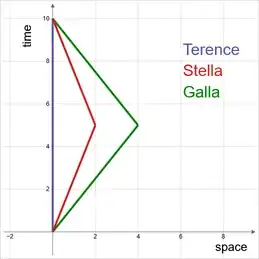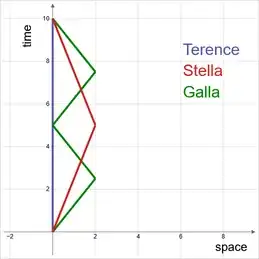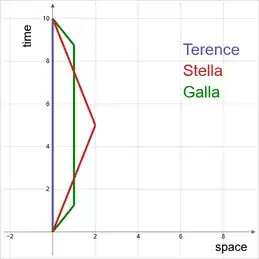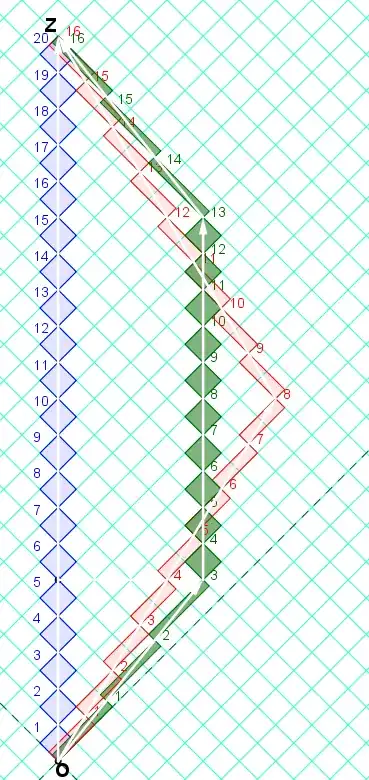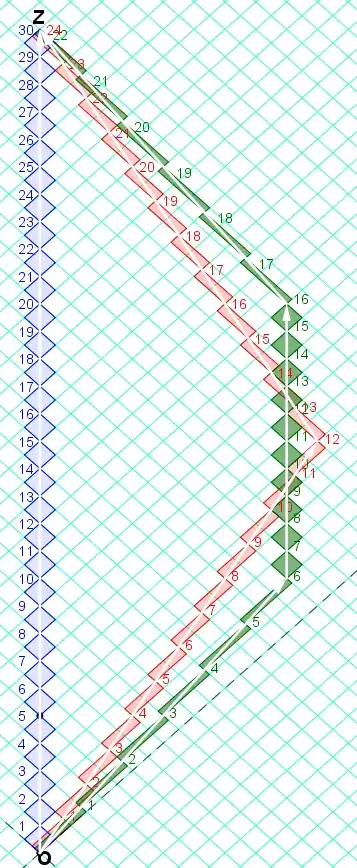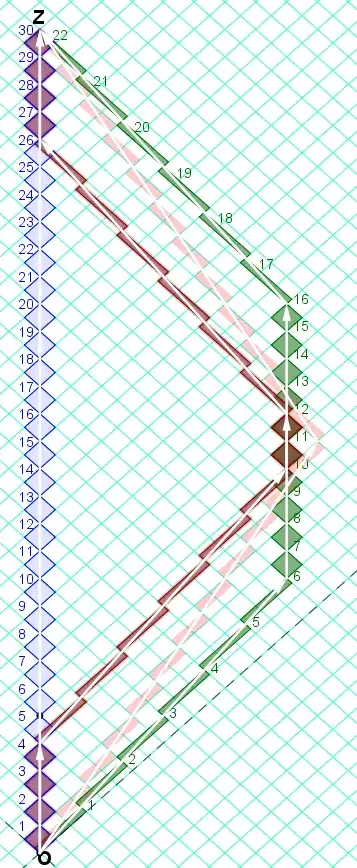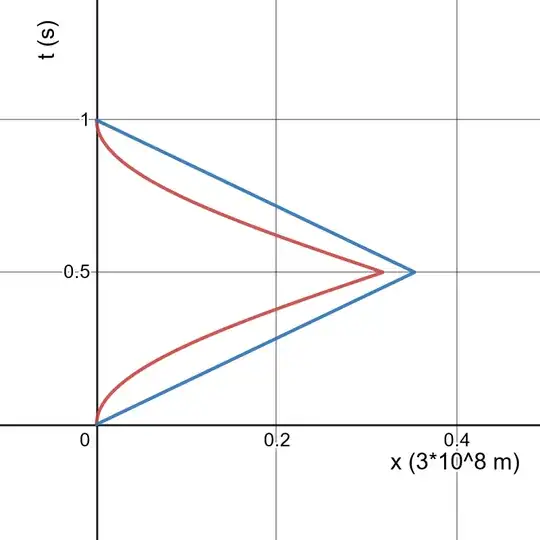I have edited the question:
I've come to realize that there is an ambiguity that I should have recognized, but I didn't. My edit of the question is towards removing the ambiguity. Please check the diffs.
I have been challenged by someone who is quite combative about it.
The context:
The first diagram shows the most straightforward implementation of the Twin Scenario thought experiment.
In this version there are three protagonists, I call them: Terence, Stella, and Galla. Terence stays at home, Stella goes out to the stars and Galla goes out to even more distant stars.
In this version of the twin, scenario clocks are compared at only two-point in time: before departure, and after rejoining.
The comparison will be in the form of the ratio of amount of proper time that has elapsed. Using $\tau_G$ for the amount of proper time that has elapsed for Galla, and $\tau_S$ for the amount of proper time that has elapsed for Stella the comparison will be in the form of $\tau_S/\tau_G$
The coordinate system of the diagram is the inertial coordinate system that is stationary with respect to Terence. I will refer to this as 'the global inertial coordinate system'.
(As is common practice in thought experiments: the U-turns are assumed to be taking only a negligible amount of time compared to the overall duration of the journey so it is not necessary to consider the duration of making the U-turn.)
As we know, upon rejoining it will be seen that for Stella a smaller amount of proper time has elapsed than for Terence, more so for Galla. For Galla, a smaller amount of proper time will have elapsed than for Stella.
In this version, with the clocks being compared only before departure and after rejoining, it is not necessary to consider the relativity of simultaneity effects or what have you; those effects all drop out of the evaluation.
For the motion depicted in the diagram the Minkowski metric alone is sufficient to evaluate the proceedings.
(I'm careful to not attribute causation here. Of course: in any physics taking place there must be some form of causation. However: to attribute causation to some specific feature isn't a necessity. Even while not attributing causality one can still do physics. In this context I'm limiting the consideration to establishing logical correlation.)
The second diagram shows a journey for Galla where she makes three U-turns instead of only one.
In the diagram 2 scenario, the amount of proper time that will be seen to have elapsed for Galla is the same as in the diagram 1 scenario.
This illustrates that in the twin scenario the amount of acceleration with respect to the global inertial coordinate system is not a factor. It is sufficient to evaluate the distance that Galla travels (with respect to the global inertial coordinate system). Galla travels more distance than Stella, and correspondingly upon rejoining of all three it will be seen that for Galla a smaller amount of proper time has elapsed than for Stella.
The third diagram illustrates the point where my combatant is challenging me.
In this scenario, Galla travels a smaller distance than Stella (wrt the global inertial coordinate system), but when she is moving she is moving faster than Stella ever does.
My combatant insists that the difference in the amount of proper time that elapses correlates with the Lorentz gamma factor, not with the distance traveled. Based on that my combatant argues that it is possible to have a scenario where Galla travels a shorter distance than Stella, but by traveling faster, Galla will upon rejoining be seen to have clocked up a smaller amount of proper time than Stella has.
(Now: it's hard for me to not be biased against my combatant's point of view. So I'm probably not doing a good job of representing the point of view of my combatant. So: don't take my word for it.)
Of course, I could go through the specific calculation for the scenario of diagram 3, and some other similar trajectories, but in my opinion, I shouldn't have to do that. In my opinion, the evaluation should capitalize on having a general principle: the Minkowski metric.
The journey will have subsections, in the sense that you need at least one U-turn; the only way to rejoin is to make a U-turn somewhere. Any trajectory consists of a concatenation of subsections that are each sufficiently straight for the Minkowski metric to be applied. (If necessary subdivide the trajectory into an arbitrarily large set of subsections and evaluate it by integration.)
A specific condition of this version of the sibling scenario is that Galla and Stella must reunite with Terence together. As represented in the diagram, in order to make that happen Galla has to coast for an extended duration. As stated at the start: the outcome is to be stated in terms of ratio of proper time elapsed: $\tau_S/\tau_G$. The long duration of the coasting phase will affect the value of that ratio.
We know for sure that for Terence the amount of proper time is maxed out. If the Minkowski metric holds good then for any traveler it follows geometrically that upon rejoining it will be seen that for the traveler a smaller amount of proper has elapsed than for Terence.
The specific question:
Is there any journey for Galla such that Galla traverses a shorter distance than Stella, but by traveling faster Galla manages to make the ratio of proper time elapsed, $\tau_S/\tau_G$, larger than one.
General discussion
Physics Stackexchange contributor Kevin Zhou has pointed out something about derivation in physics that in my opinion is very significant:
[...] in physics, you can often run derivations in both directions: you can use X to derive Y, and also Y to derive X. That isn't circular reasoning, because the real support for X (or Y) isn't that it can be derived from Y (or X), but that it is supported by some experimental data D.
One can start with the Lorentz transformations and derive the Minkowski metric, or one can start with the Minkowski metric and derive the Lorentz transformations.
The direction in which one proceeds through the derivation does not inform one about the direction of causality (or even whether thinking in terms of causality is at all applicable).
